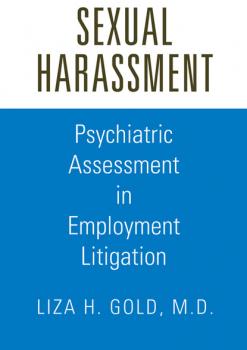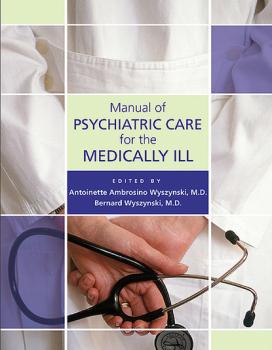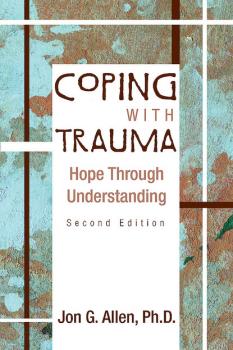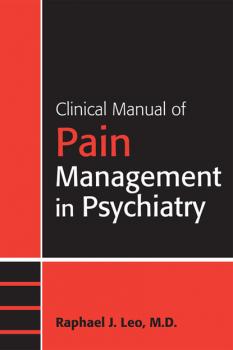ТОП просматриваемых книг сайта:
Психотерапия и консультирование
Различные книги в жанре Психотерапия и консультирование, доступные для чтения и скачиванияАннотация
Animals, like people, experience fear and avoidance, which can be reliably observed, quantified, and manipulated in almost all species. Remarkably, as this volume demonstrates, the neural circuits responsible for the acquisition and expression of fear are conserved throughout phylogeny from rodents through nonhuman primates to humans. Thus, what is discovered about the neuroanatomy and physiology of fear in a mouse can be usefully «translated» to a human with an anxiety disorder.This breakthrough in both neuroscience and mental health research is detailed in 14 fascinating chapters that cover Conditioned fear – Many scientists have convincingly documented that the amygdala is the essential brain structure in an animal's exhibition of conditioned fear, with the hippocampus required for contextual memory of conditioned fear. Though debate continues, other studies show that the anatomic and physiological findings about conditioned fear are robustly applicable to other forms of fear. The brain structures involved in fear – The data clearly show that the amygdala is the one area most consistently energized in fear responses of nonhuman and human primates. Patients with anxiety disorders have a lower threshold for amygdala activation than do control subjects; thus, fear cues that do not register an amygdala response in most individuals will do so in anxious patients. Stress effects on brain structure – It is possible that, based on both animal studies and clinical studies of children and adults, chronic exposure to fear may have deleterious effects on the structural integrity of the brain. The hippocampus appears to be particularly vulnerable, though stress damage may also occur in regions of the prefrontal cortex, such as the anterior cingulate. The results of translational research can raise concerns that observed negative changes in animal brains might apply to humans, but they can also suggest advantageous interventions, with both psychosocial and psychopharmacology approaches proving effective in reversing not only anxiety disorders but even some changes in the brain.Best of all, using these scientific models of brain function, we can now see psychotherapy and medication as complementary rather than antagonistic, with each addressing different parts of the same fear circuitry.The synthesis of knowledge in this groundbreaking work will appeal to practitioners and students alike, and justifies the optimism of its distinguished contributors that psychiatric research is at last in an era in which unprecedented insights will be gained and progress made toward better treatments.
Аннотация
This comprehensive text stands alone in addressing sexual harassment from a forensic psychiatric perspective. Sexual Harassment: Psychiatric Assessment in Employment Litigation reviews the law, social science research, clinical experience, and principles of forensic evaluation relevant to the highly adversarial legal arena of sexual harassment litigation. This illuminating guide covers every aspect of psychiatric assessment in sexual harassment litigation: definition/legal history, bias/gender, credibility/malingering, «welcomeness,» «reasonableness,» causation, and emotional injury and damages. In an area where few training or educational opportunities exist, Dr. Gold presents a structured framework for these evaluations, including case examples that bring this framework to life. No single response or specific psychiatric problem is associated with sexual harassment. Not all experiences of sexual harassment even constitute illegal employment discrimination. The term itself covers a wide range of behaviors, from annoying to traumatic. Likewise, the responses to such events, real or perceived, are broadly diverse. Further, the difficulties and ambiguities that arise at the interface of psychiatry, the legal system, and the social issues raised by sexual harassment make the application of psychiatric knowledge and expertise in such cases uniquely challenging.This work provides invaluable assistance in helping mental health experts meet these challenges while also serving the legal system's goal of adjudicating disputes in the interest of serving justice. It emphasizes that experts should Base their evaluations and testimony on a thorough evaluation of the issues in each case. Acquire the intellectual tools needed, including familiarity with gender issues, the effects of stress and trauma, the scope and effects of sexual harassment, and an awareness of the potential biases that may influence opinions. Understand the scientific basis of their testimony. As the definitive work on the forensic psychiatric aspects of sexual harassment, this work explores and bridges the interface between the law, social science, psychiatry, and employment issues. This classic volume will provide invaluable assistance to psychiatrists and psychologists in formulating credible, well-reasoned opinions in an evolving and controversial area of the law. Other mental health professionals and educators, as well as members of the legal and human resources community, will also find that this in-depth study increases their understanding and appreciation of the complexities and challenges of psychiatric evaluations in sexual harassment litigation.
Аннотация
Manual of Psychiatric Care for the Medically Ill delivers a practical approach to accurate psychiatric diagnosis and treatment in the medical-surgical setting. The editors have updated the literature reviews of their widely used 1996 American Psychiatric Publishing publication A Case Approach to Medical-Psychiatric Practice and have added easy-to-use summaries, Web resources, checklists, flowcharts, and worksheets-all designed to facilitate and teach the process of psychiatric consultation. The appended study guide makes this book even more valuable as an educational tool.Intended as a companion guide to comprehensive textbooks in psychosomatic medicine, this concise volume combines medication updates with «how-to» strategies for the psychiatric treatment of patients with cardiovascular, hepatic, renal, and pulmonary disease; gastrointestinal symptoms; delirium; HIV; hepatitis C; steroid-induced psychiatric syndromes; and organ transplantation. A special feature is the comprehensive chapter on the treatment of psychiatric illness in pregnancy. Each chapter summarizes the literature, emphasizing diagnostic and treatment considerations for patients with psychiatric symptoms and medical illnesses.Representing the work of 24 contributors, this useful, highly informative volume features Checklists, flowcharts, and worksheets that can be photocopied and brought to the patient's bedside for use during the clinical consultation. These templates help focus the information-gathering process, organize the data, and generate important documentation. Standardized assessment instruments and questionnaires, such as the Michigan Alcohol Screening Test, Delirium Rating Scale-Revised-98, and HIV Dementia Scale, which assist in consultation and evaluation. Summaries and charts of differential diagnoses to assist psychiatric consultation to medical patients, including Web addresses to access the latest information on a particular condition or treatment. A study guide in case-question-answer format for selected chapters. This volume also includes a «how-to» chapter on assessing decisional capacity, complete with a worksheet for gathering information and documenting informed consent. It also features practical reviews of psychotherapeutic issues, such as a primer for what to do when patients ask about spiritual issues. Concluding chapters present short, practical guides on addressing general psychological issues occurring in medical patients.This proven manual – already being used to teach residents the core curriculum in Consultation-Liaison Psychiatry and On-Call Preparedness at Bellevue Hospital in New York City – will be welcomed by general psychiatrists, consultation-liaison and psychosomatic medicine fellows, residents, and medical students everywhere.
Информация о книге
Автор произведения Antoinette Ambrosino Wyszynski
Аннотация
In today's world of litigation and managed care, informed consent in psychiatric practice is more important than ever and providing detailed information about illnesses and medications to patients and their families is vital to informed consent.The easy-to-read handouts on psychiatric illnesses and medications in the third edition of this immensely popular – and above all, practical – volume are key to helping patients and families understand their treatments before giving informed consent. This nuts-and-bolts resource is designed to help both beginning and seasoned clinicians get started and stay organized, providing a single source for the many practical forms, abbreviated rating scales and instruments, and information handouts for patients and their families used in daily clinical practice.With an updated format of three rather than two sections, this invaluable reference has been revised as follows: Physician Forms – Previous forms have been updated and revised, nonapplicable forms have been deleted, and new forms, such as a Medication Log, Clozapine Prescribing Guidelines and Monitoring Form, and Informed Consent to Treatment with Psychotropic Medications, have been added. Most significantly, long versions of rating scales have been replaced by abbreviated versions (e.g., the Brief Psychiatric Rating Scale was replaced with the 4-Item Positive Symptom Rating Scale and Brief Negative Symptom Assessment, and the Abnormal Involuntary Movement Scale was condensed to a single page), and new rating scales have been added, including the Brief Bipolar Disorder Symptom Scale and the Hamilton Depression Rating Scale. Information about Psychiatric Illnesses for Patients and Families – These handouts for patients and their families have been aggressively revised to include current information on new medications, with brand-new handouts about Alzheimer's disease, attention-deficit/hyperactivity disorder (ADHD), and anxiety disorders. Information about Medications for Patients and Families – Extensively revised to consolidate the discussion of medications, or a drug class, from a long and short version (from previous editions) to a single version, these medication handouts have been expanded to include information on the second-generation antipsychotics, agents for treatment of ADHD, cognitive enhancers, recently introduced antidepressants, and the new mood stabilizers. Medical students, psychiatric residents, and busy clinicians treating patients individually or in groups will appreciate the unsurpassed convenience of this indispensable volume, with its complete set of forms and protocols and comprehensive list of illness and medication handouts for patients and families.Truly the ultimate in practicality, this edition, like the two previous editions, is packaged with easy-to-use, convenient electronic versions (in PDF files) on CD-ROM, enabling practitioners to print these forms as needed.
Аннотация
Brought together for the first time in a single volume, these eight important and fascinating essays by Nobel Prize-winning psychiatrist Eric Kandel provide a breakthrough perspective on how biology has influenced modern psychiatric thought. Complete with commentaries by experts in the field, Psychiatry, Psychoanalysis, and the New Biology of Mind reflects the author's evolving view of how biology has revolutionized psychiatry and psychology and how potentially could alter modern psychoanalytic thought.The author's unique perspective on both psychoanalysis and biological research has led to breakthroughs in our thinking about neurobiology, psychiatry, and psychoanalysis – all driven by the central idea that a fuller understanding of the biological processes of learning and memory can illuminate our understanding of behavior and its disorders. These wonderful essays cover the mechanisms of psychotherapy and medications, showing that both work at the same level of neural circuits and synapses, and the implications of neurobiological research for psychotherapy; the ability to detect functional changes in the brain after psychotherapy, which enables us, for the first time, to objectively evaluate the effects of psychotherapy on individual patients; the need for animal models of mental disorders; for example, learned fear, to show how molecules and cellular mechanisms for learning and memory can be combined in various ways to produce a range of adaptive and maladaptive behaviors; the unification of behavioral psychology, cognitive psychology, neuroscience, and molecular biology into the new science of the mind, charted in two seminal reports on neurobiology and molecular biology given in 1983 and 2000; the critical role of synapses and synaptic strength in both short- and long-term learning; the biological and social implications of the mapping of the human genome for medicine in general and for psychiatry and mental health in particular; The author concludes by calling for a revolution in psychiatry, one that can use the power of biology and cognitive psychology to treat the many mentally ill persons who do not benefit from drug therapy.Fascinating reading for psychiatrists, psychoanalysts, social workers, residents in psychiatry, and trainees in psychoanalysis, Psychiatry, Psychoanalysis, and the New Biology of Mind records with elegant precision the monumental changes taking place in psychiatric thinking. It is an invaluable reference work and a treasured resource for thinking about the future.
Аннотация
Combining years of research, teaching, and experience treating trauma survivors, Dr. Jon G. Allen offers compassionate and practical guidance to understanding trauma and its effects on the self and relationships. Coping With Trauma is based on more than a decade of Dr. Allen's experience conducting educational groups for persons struggling with psychiatric disorders stemming from trauma. Written for a general audience, this book does not require a background in psychology. Readers will gain essential knowledge to embark on the process of healing from the complex wounds of trauma, along with a guide to current treatment approaches.In this supportive and informative work, readers will be introduced to and encouraged in the process of healing by an author who is both witness and guide. This clearly written, insightful book not only teaches clinicians about trauma but also, equally important, teaches clinicians how to educate their patients about trauma.Reshaped by recent developments in attachment theory, including the importance of cumulative stress over a lifetime, this compelling work retains the author's initial focus on attachment as he looks at trauma from two perspectives. From the psychological perspective, the author discusses the impact of trauma on emotion, memory, the self, and relationships, incorporating research from neuroscience to argue that trauma is a physical illness. From the psychiatric perspective, the author discusses various trauma-related disorders and symptoms: depression, posttraumatic stress disorder, and dissociative disorders, along with a range of self-destructive behaviors to which trauma can make a contribution.Important updates include substantive and practical information on Emotion and emotion regulation, prompted by extensive contemporary research on emotion – which is becoming a science unto itself. Illness, based on current developments in the neurobiological understanding of trauma. Depression, a pervasive trauma-related problem that poses a number of catch-22s for recovery. Various forms of self-destructiveness – substance abuse, eating disorders, and deliberate self-harm – all construed as coping strategies that backfire. Suicidal states and self-defeating aspects of personality disorders. The author addresses the challenges of healing by reviewing strategies of emotion regulation as well as a wide range of sound treatment approaches. He concludes with a new chapter on the foundation of all healing: maintaining hope.This exceptionally comprehensive overview of a wide range of traumatic experiences, written in nontechnical language with extensive references to both classic and contemporary theoretical, clinical, and research literature, offers a uniquely useful guide for victims of trauma, their family members, and mental health care professionals alike.
Аннотация
Clinical Manual of Eating Disorders provides sound therapeutic advice based on current research and clinical practice. It includes detailed discussions of various aspects of assessment and treatment, featuring up-to-date evidence- and consensus-based information. Ranging from the determination of initial treatment approaches to problems posed by unique groups of patients, it marks the first APPI volume specifically directed toward the clinical management of patients with eating disorders – and the first book to focus squarely on what psychiatrists need to know about the clinical assessment and management of patients with anorexia nervosa, bulimia nervosa, binge eating disorders, and obesity.In these pages, preeminent psychiatric authorities on eating disorders offer practical advice, research results, and the fruits of clinical experience. In addition to thorough extended discussion and coverage of all assessment and treatment topics encompassed by the third edition of the American Psychiatric Association's «Practice Guideline for the Treatment of Patients with Eating Disorders,» the book includes topics such as: night eating and related syndromes, obesity and weight management in relation to psychiatric medications, psychiatric aspects of bariatric surgery, and management of patients with chronic, intractable eating disorders. Clinical vignettes discuss specific techniques and strategies to help anchor the discussions in the decision-making situations faced by practitioners every day. Among the book's features: coverage of a wide range of diagnoses, from new onset to very chronic conditions consideration of comorbid psychiatric, substance abuse, and medical conditions applications to outpatient, ambulatory, and inpatient settings a range of treatment strategies, including biological, cognitive-behavioral, psychodynamic, and family treatments discussion of special concerns involving college athletes and patients from different ethnic or cultural backgrounds inclusion of APA Practice Guideline tables as well as the most recent version of the Eating Disorders Questionnaire The insights garnered from this book will enable clinicians to: better make nuanced assessments of patients with eating disorders present the best available evidence about treatment options to patients and their families initiate and conduct treatment interventions with the majority of patients they encounter Clinical Manual of Eating Disorders is an invaluable tool for psychiatrists that complements other resources for all professionals who see patients with these challenging conditions, whether mental health clinicians, primary care physicians, dieticians, psychologists, or social workers.
Аннотация
Written to help identify major gaps in our knowledge of how gender and age affect psychiatric diagnoses and to stimulate much-needed research to fill these gaps, Age and Gender Considerations in Psychiatric Diagnosis serves as both a valuable short-term source for the DSM-V Task Force and its disorder-specific workgroups, and a long-term guide for future studies that will contribute to revised psychiatric classifications in these three areas.Here, 47 experts present findings in three areas of psychiatric research that historically have been neglected but rightfully have received increasing attention in recent years and thus are worthy of investigation into their clinical features, etiology, and course:1. Significant gender differences in prevalence, symptom profiles, and risk factors for mental disorders, including neurodevelopmental, neurophysiological, and environmental factors for men and women that cut across diagnostic categories-for example, the critical importance of gender in how psychiatric illness develops and presents; DSM's approach to gender to date; and relevant research findings and gaps in the epidemiology, etiology, and pathophysiology of disorders and the gender-related expression of psychopathology, including the controversial and complex question of whether DSM should have different diagnostic criteria for men and women.2. Mental disorders in infancy and early childhood, including diagnosis and measurement of psychopathology; PTSD and social and cognitive factors related to the experience of stress; reactive attachment disorder (unique in part because of its specificity to early childhood); mood and anxiety disorders and difficulties in diagnosis; sleep disorders, including two new disorders, Night-Waking Dysomnia and Sleep-Onset Dysomnia; feeding disorders, including the need to address overeating and overfeeding (especially given the alleged U.S. epidemic of obesity); early childhood manifestations of behavior disorders; and early symptoms and diagnosis of autism.3. Mental disorders in the elderly, such as dementia and depression, once considered normal consequences of aging but now understood to represent mental disorders, including the need to identify specific brain structure abnormalities, biomarkers, and the many contributing biological, psychosocial, and environmental factors of mental illness in late life and to understand their roles in the elderly to better diagnose and monitor disease progression.Written for clinicians and researchers alike, this thought-provoking compendium contributes critical information that helps enhance our understanding of the causes of mental disorders, develop effective preventive and treatment interventions, and inform future editions of DSM and ICD.
Аннотация
While recognizing the multidisciplinary nature of pain management, the Clinical Manual of Pain Management in Psychiatry focuses on the role of mental health practitioners in evaluation and assessment, pharmacological management, psychotherapeutic interventions, and comprehensive treatment planning. It balances theoretical foundations of pain pathophysiology with applied clinical information, providing guidelines to psychiatric differential diagnosis of pain states and psychiatric comorbidities associated with pain and integrating diagnostic and treatment approaches. Because proper treatment requires understanding the whole person, the book views the patient from biological, psychological, and social perspectives. It stresses the importance of examining psychological variables that can limit outcomes and even preclude aggressive interventional approaches. The manual also includes considerations pertinent to the elderly, children, and cultural groups.This manual expands on the author's previous Concise Guide to Pain Management for Psychiatrists to reflect significant advances in the field of pain medicine. It updates trends in treatment approaches along with our understanding of chronic pain conditions, and presents new knowledge of the biological substrates underlying both pain and psychiatric comorbidities. The manual features particularly extensive revisions regarding the use of psychiatric and other adjunctive medications in pain management, including expanded discussion of long-term adverse effects, dependence, and pseudoaddictive behaviors involving opiates and weak analgesics. It also delineates the use of adjunctive treatments, including evolving data on the use of antidepressants and related medications for patients with chronic pain. Among the its practical benefits, the book Features updated coverage of common psychiatric comorbidities such as depression, anxiety, and personality disorders Addresses common pain disorders ranging from headache and back pain to pain related to cancer and HIV Includes an extensively revised chapter on pharmacology, familiarizing readers with the range of pain medications and providing information on dosages and side effects Fully discusses psychotherapeutic approaches, plus adjunctive interventions such as biofeedback and hypnosis Covers special techniques such as acupuncture and regional neural blockade Offers updated advice on emerging forensic issues, from disability claims to controlled substance diversion With pain management issues so common in daily practice, this handy portable guide is designed for quick reference, features numerous tables and illustrations, and is easily understandable by less experienced clinicians or non-pain specialists. While written expressly for busy psychiatrists, it is also useful to psychologists, social workers, and other physicians.
Аннотация
Packed with practical advice from experts, and based on the editor's many years of organizing career seminars for psychiatric residents, Entering Private Practice: A Handbook for Psychiatrists offers a comprehensive curricular approach – highlighted throughout by user-friendly forms, samples, and checklists – to setting out on a career in private practice.Entering Private Practice: A Handbook for Psychiatrists details the advantages and disadvantages of private practice and emphasizes that practitioners must love their work and balance it with a successful personal life. Following a systematic, no-nonsense approach to private practice, these distinguished contributors discuss the nuts and bolts of how to, Find and set up a private practice, including the use of technology and the web to minimize administrative overhead and enhance clinical services – A self-administered form to get started; advice on finance, Internet searches, networking, and interviewing; pros and cons of solo practice, small and large psychiatric groups, and multidisciplinary and multispecialty groups; and step-by step instructions on everything from choosing a location and handling finances and billing to hiring staff and selecting décor Market a practice – Top 10 tips for both internal marketing (advice for communicating with patients and sample patient and physician surveys), and external marketing (effective outlets, including directory listings, brochures and sample content, direct mail, and the media; includes sample press release and media pitch) Navigate the ins and outs of insurance billing and relationships – Basic principles and procedures to help practitioners do good work for reasonable pay and help patients get what they most need despite limited resources (including Medicare forms and checklists for understanding insurance benefits and notifying patients about the costs of ancillary services) Relate to primary care physicians – Integration of care (referral, consultation, and collaboration) to achieve better patient outcomes, including basic principles and skills for effective communication Steer clear of legal pitfalls – The top 10 legal and risk management areas of concern for psychiatrists, including practice rules, confidentiality, record-keeping, compliance, managed care, and malpractice insurance, among others Avoid or deal with common ethical problems – Confidentiality, informed consent, boundaries, dealing with industry, continuing education responsibilities, general health care ethics, collaboration, and money issues illustrated by case vignettes Joining the ranks of essential guides, Entering Private Practice: A Handbook for Psychiatrists is a must-read for any psychiatrist planning a career in or a career change to private practice.










